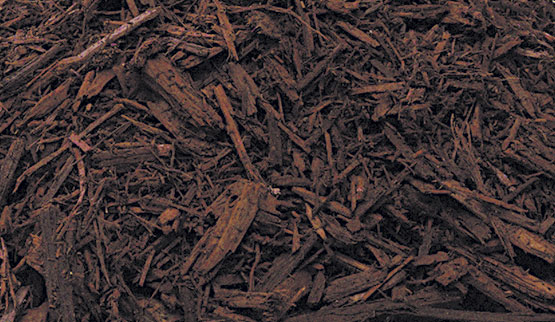Benefits of Mulch – Ventura, Camarillo, Newbury Park, Carpinteria Landscaping
Having mulch in the planter beds of your yard has many benefits. Not only does it provide a clean, finished, and manicured look, but it also has many functional purposes. Mulch can come in many forms, including grass clippings, different varieties of wood and bark pieces/shavings, decaying leaves, compost, peat moss, straw and hay, gravel and crushed rock, plastic landscape sheeting, or shredded rubber. For simplistic purposes, we’ll be discussing the benefits of nitrolized wood shavings, the only mulch we recommend and the most common and beneficial form.
Here are the key benefits:
- Mulching will reduce the amount of water that evaporates from the soil, greatly reducing the amount of water needed by your plants.
- In thick clay soil, mulch improves the quality of your soil by breaking up fine clay and allowing better water and air movement through the soil.
- In sandy soil, mulch provides missing nutrients and improves the soil’s ability to hold water.
- Mulch acts as an insulating layer on top of soil, keeping it cooler in the summer and helping make temperature changes more gradual and less sudden. Roots like that!
- Mulch prevents weeds, a favorite for homeowners, and any weeds that do grow are much easier to remove.
- As mulch breaks down, it releases nutrients into the soil.
Scarlett’s Does It Right!
Whether your yard is old or new, we’re your source for regular maintenance and routine mulch replacement! We make your investment work for your yard by taking the right steps in applying it. Before applying mulch, we remove weeds and water the soil thoroughly. We’ll remove grass from underneath trees (12 inches minimum from the trunk) and replace it with mulch to minimize competition for water and nutrients. Not only does this mimic the way trees grow in nature, but it also makes for a cleaner, more manicured look. We always apply a minimum of 2 inches of mulch in all planting areas. Finer to medium mulches (sized about half-inch to an inch and half) are applied no more than 2 inches deep. Around shrubs, the root-ball will be 1 inch above the soil, with 1 inch of mulch around it, while trees will have 2 inches of mulch around their root ball. It is advised to replace nitrolized wood shavings every 8-12 months, and you can have us take care of that for you and make it a hassle free experience!
Why We ONLY Recommend Nitrolized Wood Shavings
As we mentioned starting off, there are many types of mulch. So what’s wrong with the other options? Grass clippings are short lived, can only be applied 1 inch thick which doesn’t serve much benefit for plants or for fighting weeds, needs to be replaced every week, and can reseed in planter beds. That will cause a big headache! Decaying leaves work much like nitrolized wood shavings, but are visually unappealing, with a messy and unkept look to them. Compost has an unappealing smell, can burn plants, and harbors weeds. Peat moss tends to repel water which will obviously create problems for plants. Straw and hay only last for a month or two and can easily blow away. Gravel and crushed rock have no nutrient benefits because they don’t break down. Plastic landscape sheeting prevents water infiltration and is not environmentally friendly because it’s not biodegradable. Shredded rubber, one of the worst, has no nutrient benefits, is not biodegradable, and causes damage in the soil by getting stuck in the soil and not allowing proper water and oxygen movement. Plus it makes your yard smell like old tires. Some wood mulch, such as wood chips dyed red or black, are known to be toxic, so it’s not advised to used these products. Black mulch also causes the soil to overheat plants because its dark color absorbs the heat from the sun.
Want your yard mulched? Give us a call and we can come talk with you, assess your yard, and give you a quote!



